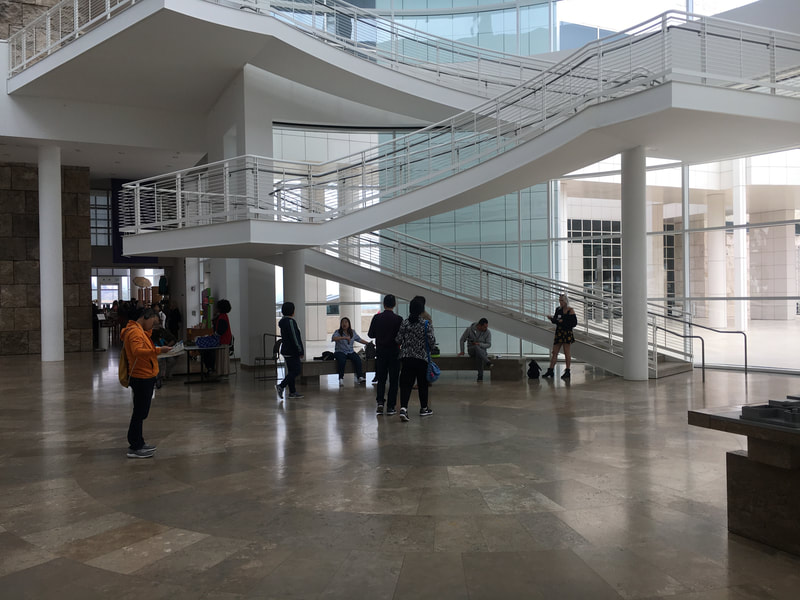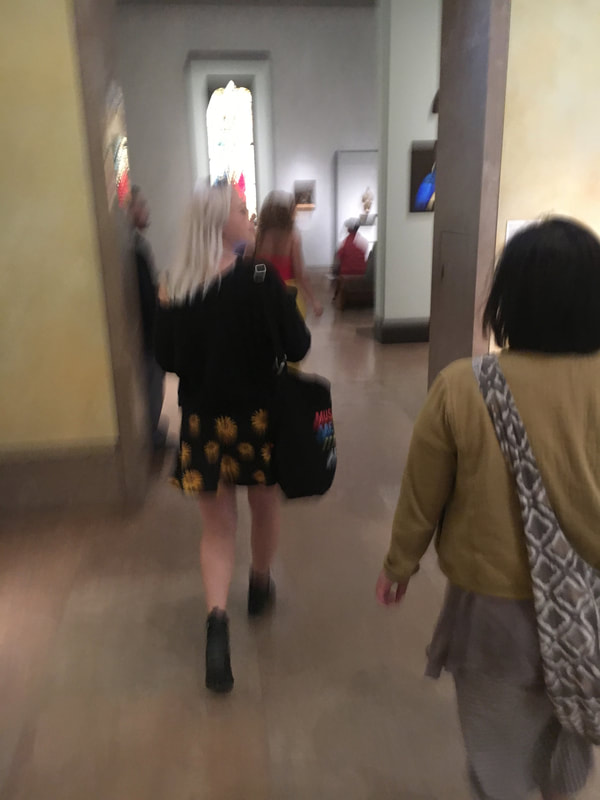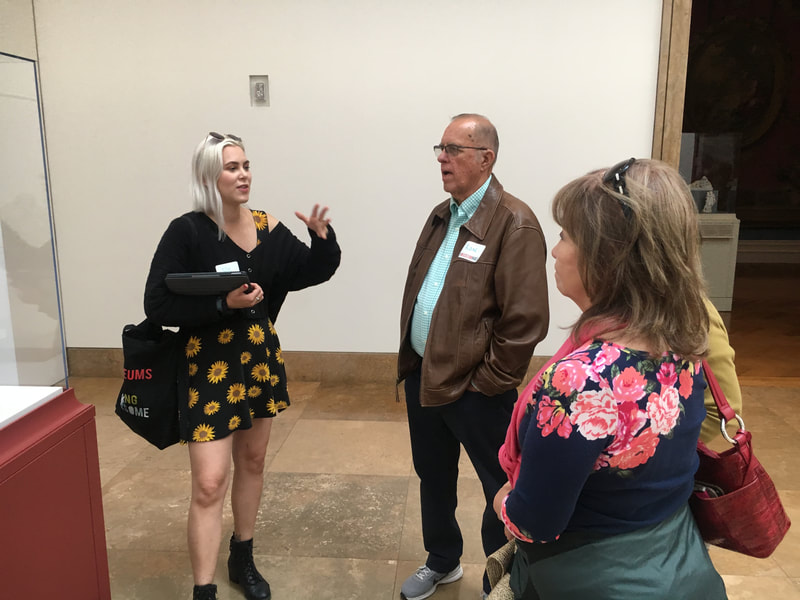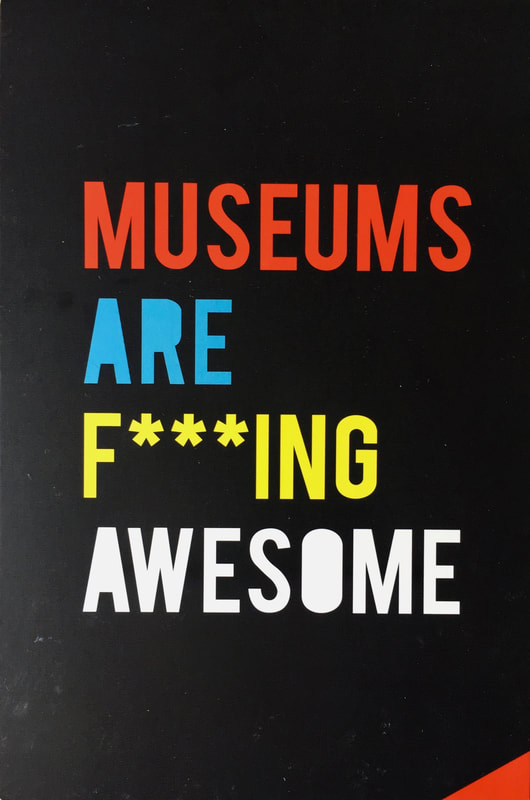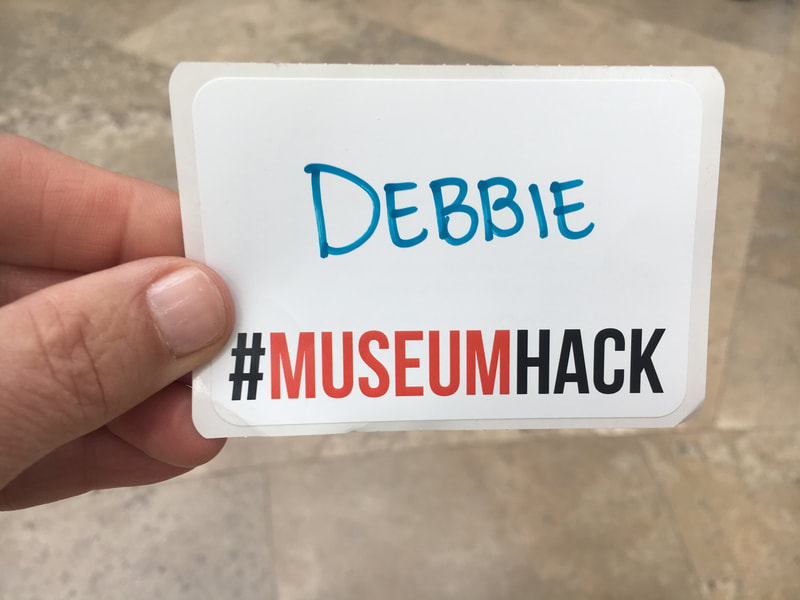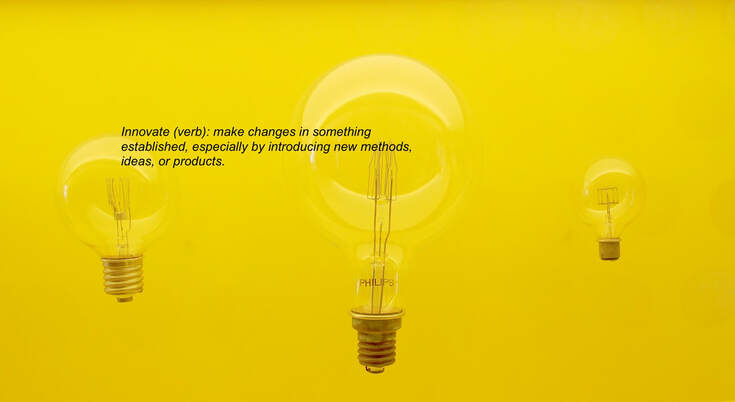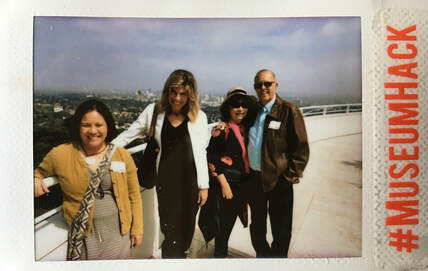 Pic of our Getty Un-Highlights tour group Pic of our Getty Un-Highlights tour group “Museum Hack leads renegade tours of the world’s best museums…with guides that are smart, sassy and sarcastic”— Museum Hack’s website and YouTube video. I signed up for Museum Hack's ‘Un-highlights Tour’—I wanted to shake things up with The Getty. Though my favorite museum where I’ve done numerous docent-led tours, I felt ready for something ‘sassy’. For the most part Getty tours are great: interesting, sometimes dry, definitely predictable. The Hack’s tours sounded anything but. According to their website the Getty tour is for, “for those who seek secretive, salacious, scandalous stories” (bring it on!), “speed walkers” (wouldn’t want it any other way), “people who don’t like museums” (okay, I can pretend)—and “it’s not your grandma’s museum tour”. So radical! I signed on and paid my $49; never mind that I happen to be a grandmother. Saturday came. I got an email that morning reminding me of the 2:30 pm tour—where to meet, to leave time for parking, etc. and with a downloadable e-ticket. I left early to make sure I got a parking spot (I know…so non-millennial). Then got a text from ‘Vic’ our tour guide with last minute instructions and a contact number. Brilliant! The Tour The tour did not disappoint. Vic, vivacious and edgy, enthusiastically greeted the four us. Our group likely skewed older than most. One couple was Vic’s grandpa, Ron, a seventy-five year old man with his partner, me (fifty-plus), and one other woman in her forties. Poor Vic. Yet she energetically led us on a whirlwind tour visiting a selection of her favorite works telling stories of each piece that incorporated unique and (sometimes) shocking facts. She was engaging, involving us with questions and inviting comments. No boring art history with dates, names of dead people or terms like Baroque sensibility, fluent brushwork or atmospheric landscapes. No sirree—we discussed partying, the love of wine, penises (more on that later), and heard gossipy stories of several works you wouldn’t hear from a Getty docent. We played games too. Yes games! One was making up a who-dunnit story using paintings. Standing in front of the ‘Countess of Chesterfield’ portrait by Gainsborough, we had to create a story of who killed the Countess, how and where using the artworks in the nearby galleries. Working in teams of two, we were to take pictures of three artworks with our phones that told the story. Fun! My team determined that a jealous lover, poisoned tea biscuits and worked with the housemaid to serve them to the Countess in her salon. Dead! Another was to find a piece of artwork during the tour that represented who we were in a previous life, then take a picture and share it at the end of the tour. There would be a prize. There wasn’t much of a contest, as Ron and his partner didn’t take a picture but described vaguely who they might have been, the other woman said she would have been King Louis XIV red shoes he wore in his portrait (?!?). I chose a woman who was leading two horses in a field; I likely owned and ran a farm in my past life (boring, but the bar was low). I won a cool magnet of Van Gogh’s Iris’ painting. The games were fun; they prompted thought and engagement. Vic did a great job introducing them; it didn’t feel awkward or weird. 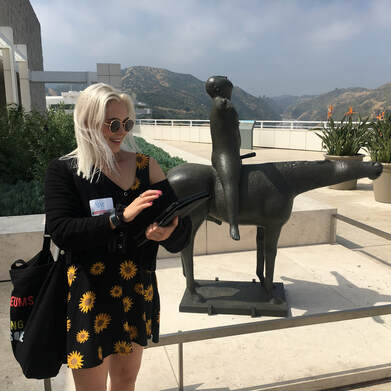 Vic telling the (back) story of the 'Angel of the Citadel' sculpture Vic telling the (back) story of the 'Angel of the Citadel' sculpture Salacious Stories As promised there were back stories about various artworks. Some salacious in nature. One was the story behind the sculpture ‘Angel of the Citadel’ which features a man sitting on a horse with an erect penis. Apparently the penis-sculpture piece disappeared one day a couple of years ago, (some Getty visitor likely has this prize mounted proudly somewhere in his or her home), and The Getty had to contact the company that had made the mold of the statue (cast in 1950) to see if they could make another phallic cast. Apparently they did, and now it is attached, and virtually impossible to remove according to Vic. My guess is it’s a popular selfie spot on most of the Hack’s tours. Another, not so salacious but juicy nonetheless, was the kidnapping story of John P. Getty’s grandson in 1973. Vic shared, in the John P Getty exhibit space which tells (parts of) Getty’s life story, how Getty refused to pay the $17 million ransom for his grandson saying it would set a precedent for his other grandchildren. After receiving a piece of his grandson’s ear in the mail, he finally agreed to a negotiated amount of $3 million, which was the maximum amount you could claim on your income tax. Cheap! Finally, the most shocking story of what Vic shared, is the fact that of all the artworks in The Getty’s permanent collection, only two are by female artists! Vic was more outraged than any of us. I’m so jaded. I Want More! The tour was stellar; it lived up to its promise as a renegade tour that’s not your traditional (grandma’s) museum tour. Museum Hack operates in five cities, New York, LA, Chicago, D.C. and San Francisco. They also offer another tour, ‘Badass Bitches’ at The Getty which I’m going to try next if I can convince some girlfriends to join me. It looks just as renegade, if not more so than the un-highlights tour given it promises to “kick some ass”. I’m in.
0 Comments
This post explores what it means for museums to be innovative in today’s digital culture, and describes unique, forward-thinking programs and initiatives in five different museums. What does it mean for a museum to be innovative? When thinking of innovative companies and institutions, Amazon comes mind, as does Apple, AirBnB, even Bank of America with its digital tools that support virtual banking (like depositing a check with a smart phone). I don’t usually associate museums with innovation. Words like staid, traditional and stoic seem to describe museums best, traditional ones at least. For the most part, cultural institutions are not leading the way in offering guest-centric, unique, user-friendly experiences. I was reminded of museums’ status as ‘traditional’ institutions in Successful Museum Management a course I’m taking with Northwestern’s Museum Studies certificate program. The instructor, a museum director of a small museum, shared a graphic illustrating strategic planning elements for museums (below); the graphic shows the mission statement and values lasting for 100 years (!). 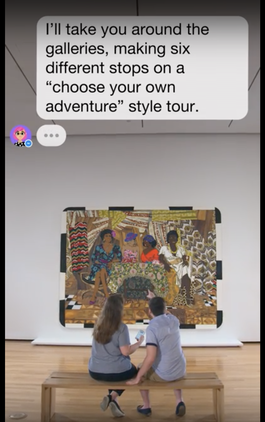 Image from YouTube video describing how 'Dot' the digital tour guide works through Facebook Messenger app for Akron Museum of Art Image from YouTube video describing how 'Dot' the digital tour guide works through Facebook Messenger app for Akron Museum of Art A mission statement steers the ship so to speak. Yet a hundred years seems eons in today’s fast-paced environment when technology is drastically changing consumer behaviours. Yet it doesn’t mean that organizations can't adapt with shorter-term goals and objectives. A recent article by an experienced museum practitioner discussed the need for adaptable strategic planning, more importantly, the need for a responsive, flexible mindset that's open to change. Easier said than done, change is hard. Yet, one only needs to look at how retail has changed over the last couple of years, the number of big retailers are defunct due to shifts in customer purchase behaviours, for example Toys R Us, Sears, K-mart and others, to see how inability to adapt led to an at-risk business model. Cultural institutions are just as vulnerable. So how do museums adapt, become agile organizations? I don’t work in the museum sphere, but I do know that it’s leaders of organizations who act as visionaries, who assess opportunities and strengths within their organization that can lead an organization to sustainability; who know how to leverage people and resources effectively, are responsive to the environment, can create and implement strategies that meet the needs of customers (visitors) and employees. Below are examples of museums that are innovating—are trying new, unique initiatives that disrupt traditional ways of operating. One project listed (SFMOMA’s app), is no longer operating as it was intended at launch, yet I still included it, as it’s a constructive example of how initiatives can be at risk without the support of resources and/or leaders who aren't able to adapt to change. Grading Art: The ‘D’s Gotta Go
The Non-Curator Curated Exhibit
Fire the Curators
“Alexa, What IS This”?
At San Fransisco Museum of Modern Art (SFMOMA) Tech Goes Awry
As we’ve seen with this selection of five unique initiatives, innovation IS happening within cultural institutions, change is afoot with much to look forward to. As in any industry, there are leaders and laggers, I’m going to keep my eye on the leaders and see where it takes us! Related Posts
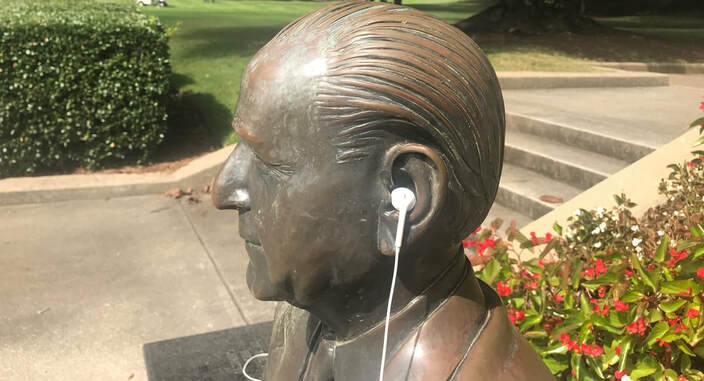 Podcasts are hot right now. A recent report on digital media trends, The Infinite Dial 2019 describes how the podcasting genre is exploding while social media use is stalling (Facebook usage continues to drop). It’s no wonder--podcasts are a portable, entertaining media for consumption, ideal for people on the go. There are thousands of podcasts to choose from with new ones coming out every week. Yet good museum and arts podcasts are tough to find and after listening to several I found five (very) good shows I share here. They are current (recent episodes in 2019), range between 30 and 60 minutes, have excellent production quality, and most importantly feature engaging, enriching discussions and interviews—I look forward to new episodes. Each covers a different aspect of culture; The Art Newspaper shares current news in the arts world, ArtTactic shares cutting edge initiatives in the arts world, and each show features interviews with artists on a regular basis. I’m always on the lookout for new shows. I’ll keep updating my Museum Resources page, so check back regularly. Arts + Ideas, The Getty Love this podcast for the variety of guests and topics, the quality and depth of interviews. It’s hosted by Jim Cuno, president of the J Paul Getty Trust. Cuno meets (usually in person) with artists, writers, curators, architects, conservators and others to discuss their work (his guests are usually affiliated with The Getty in some way). Published bi-weekly. Highlights: Cuno keeps the conversation grounded, relevant and interesting. He puts the listener first, frequently asking guests to “describe this art piece for our listeners” or “share with our listeners”. Favorite episodes were with architect Richard Gehry and one about the conservation work done on the Salk Institute. The Art Newspaper An excellent program out of the UK that covers current and trending topics in the world of art and culture. It’s sponsored by Bonham’s, long-time auctioneers based in London and hosted by Ben Luke. There’s also the Art Newspaper newsletter. It covers art and culture events worldwide—everything from art fairs, shows, museum exhibits and events, art auction results, AND discusses political and social issues, as well as current events related to artists, culture and museums.Published weekly. Highlights: The breadth of topics—rarely dull, frequently captivating. Sometimes features panels of guests which adds variety and diversity of perspectives. ArtTactic Recently found this podcast; glad I did; it’s different and interesting. It features innovative and unique news, artists and companies involved with the art market. Interesting stuff. It’s sponsored by the company ArtTactic, a UK-based company which is (as described on its website) a progressive art market analysis firm that offers dynamic and bespoke market intelligence on the fast-paced and ever-changing global art market. Published bi-monthly. Highlights: Unique and thought-provoking. Forward thinking guests offer insights into new opportunities and ways of thinking about art, museums, exhibits and technology. Museum Confidential Interesting podcast by NPR; it’s tag line “a behind the scenes look at museums”, is pretty accurate. It features a variety of guests that includes museum directors and curators from from small, lesser known museums. Some episodes feature professionals affiliated with art, such as art conservators and authors. It’s hosted by Jeff Martin of Philbrook Museum of Art and produced by Scott Gregory with Public Radio Tulsa. Published bi-monthly. Highlights: features unique museums with fresh perspectives. Hosts. The Modern Art Notes Podcast Highly acclaimed podcast that features in-depth interviews—usually an hour long, with artists, historians, authors, curators and conservators who are usually from the United States. This was the first arts podcast I found; and loved it! It was hard to find others that met the standard of this show; the bar is high. Though sometimes some of the guests on the show, usually artists, ramble on at length discussing technical aspects of their work, but overall the episodes are interesting and thoughtful. The host Tyler Green, does a good job drawing out his guests. Published weekly. Highlights: the episode webpage usually features (numerous) excellent images of the works discussed in each show. Related
Source
|
Museums for Real is a blog with insights and ideas on how to make museums relevant and enjoyable for everyone.
|
